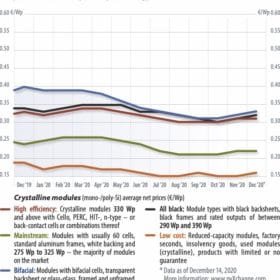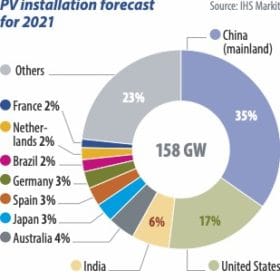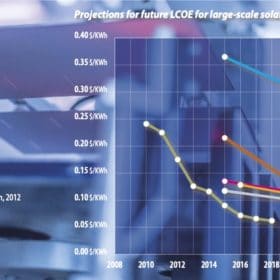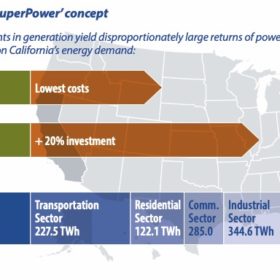Each record-setting year
While much was supposedly “unprecedented” about 2020, some historians may beg to differ. As 2021 dawns, one thing has definitely never been seen before, and that is that solar, under the right circumstances, is very much the cheapest source of electricity on earth.
More to come in ‘21
With the wholesale transformation of the power industry from the inside out and other energy transition mega-trends, capital will continue to flow into renewables from ESG, energy funds, and retail, writes ROTH Capital Analyst Jesse Pichel. Look for a greater mix of unsubsidized economic solar projects to support improving revenue visibility, increasing earnings quality, and multiple expansions.
2020 – Taking the time to say ‘thanks’…
Alongside all of the problems, 2020 has brought us a few promising initiatives and developments. Martin Schachinger of pvXchange.com looks back over the second half of the year and offers a quick look at what could be in store for 2021.
Fasten your seat belts
The PV industry is in for a wild ride to add 158 GW in 2021, writes IHS Markit’s Josefin Berg. Delayed projects from this year, together with a generally increased appetite for renewables around the world, leads us to project 34% year-on-year growth in annual PV installations in 2021 – a year when module prices will remain high for at least the first two quarters.
Xinjiang sanctions and the PV supply chain
Due to forced labor concerns, a ban on imports from Xinjiang to the United States appears likely. This could be another blow for polysilicon producers hit by industrial accidents and the threat of floods in the third quarter of 2020. Chinese polysilicon prices have surged more than 50% in a matter of a months. Consequently, wafer prices have skyrocketed, bringing increasing costs to the solar cell and PV module segments. In the face of price hikes, some projects are now postponed until the first half of 2021.
Exceeding all expectations
Forecasts for the levelized cost of electricity (LCOE) of solar PV were hotly contested over the past decade, with one trend predominating: All but the most optimistic outlooks were wrong. pv magazine has gathered data to showcase the recent evolution of solar PV energy costs, and the results are stark. Within just a few years, initial projections become outdated, which means that forecasts of solar PV prices are more art than science.
PV in the water-energy-food nexus
Sector coupling may be somewhat of a buzzword, but it also points to opportunities for PV beyond the power markets, which may quickly reach limitations during peak hours of irradiation. Combined energy, food and clean water production presents one such opportunity, with benefits for developers, utilities and communities.
Solar, wind, storage superpower
Tony Seba was among the first to recognize the disruptive potential of solar PV with the publication of his book “Solar Trillions” in 2010. His think tank, RethinkX, recently published a report titled “Rethinking Energy 2020-2030 – 100% Solar, Wind and Batteries is Just the Beginning.” In early December, pv magazine publisher, Eckhart Gouras, interviewed Seba and Adam Dorr, the two authors of this report. As Seba and Dorr make clear in the interview, a 100% solar-wind-battery system is not only possible, but the cheapest way to build an electricity system in the U.S. by 2030. They introduce the concept of the “Clean Energy U-curve,” which shows that the cheapest system is actually one that involves a lot more solar PV and wind power capacity than the peak power demand profile. But they go one step further by introducing the concept of “SuperPower”: by investing in even more solar PV and wind power than the lowest-cost system defined by the “Clean Energy U-curve,” the gain in additional energy, or “superpower,” is exponential to the money invested.
KSA reforms, but will PV prosper?
Long-term observers of solar deployment in Saudi Arabia can point to almost a decade of disappointment. But that is not to say that no progress has been made, and regional renewables champion ACWA Power has built a solid track record. Indeed, recent reforms to the national utility may give rise to new hopes.
Jordanian market hits saturation point
With a favorable regulatory environment and massive demand for solar PV systems, the future was once bright for solar in Jordan. One Jordanian solar contractor, speaking on condition of anonymity, tells pv magazine that his company had an 18 MW pipeline in 2017 – a “thriving” business. However, the situation has changed significantly in recent years.









